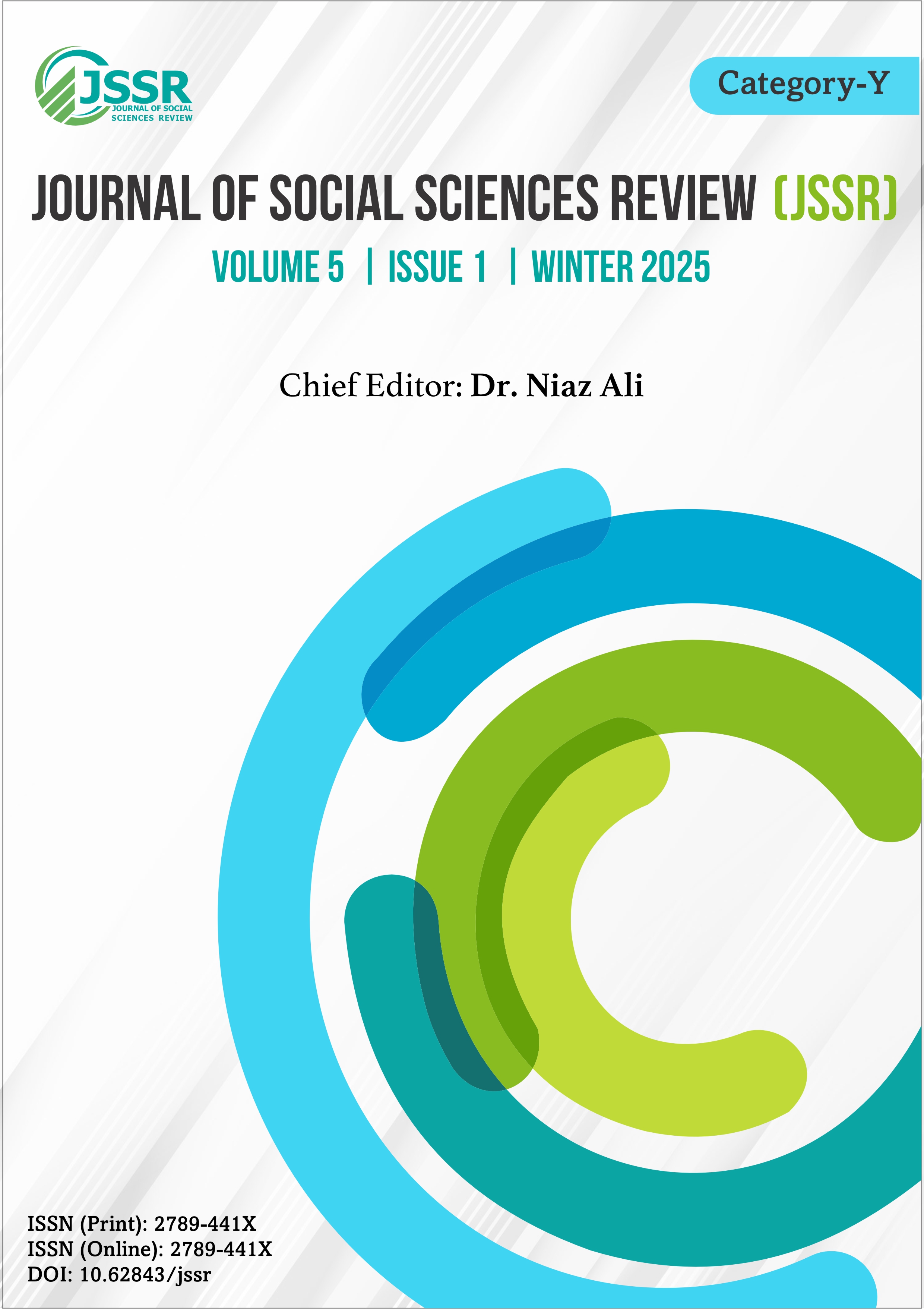Social Safety Nets for Labor Welfare and their Extent of Coverage in Khyber Pakhtunkhwa, Pakistan
DOI:
https://doi.org/10.62843/jssr.v5i1.462Keywords:
Social Safety Nets, Employees’ Social Security Institutions, Employees’ Old Age Benefits Institutions, Worker Welfare Board, Industrial WorkersAbstract
This study has been carried out with the purpose to introduce the readers with the services and facilities being provided by the government of Khyber Pakhtunkhwa to workers who are working in different small and medium industries in District Peshawar. Labor force is regarded to be the backbone of any industrial society. In Pakistan, laborers are facing multitude of problems, however, the state is committed to provide the industrial workers with different services and facilities. In order to cope with risks and unseen contingencies each province in Pakistan has established social safety nets for their industrial workers. These includes the employees’ social security institution, employees’ old age benefits institution, and workers’ welfare board. These social safety nets provides laborers with different services and facilities i.e. educational stipend to children of the workers, disability allowance, sickness benefits, health services, survivors’ pension, jahaiz fund, care for workers’ dependents, and death grants etc. This study has evaluated the nature and extent of the social safety nets in Khyber Pakhtunkhwa. The study suggests that all the industrial workers should be provided with all social security services.
References
Besley, T., Burgess, R, Rasul, I. (2003) Benchmarking Government Provision of Social Safety Nets. Washigton D.C: Social Protection Unit Human Development Network. The World Bank.
Browne, J. Hood, A. (2012). A Survey of the UK Benefit System. UK. Economic and Social Research Council (E.S.R.C).
Employess's Old Age Benefits Institution (2012). Retrieved on October 21, 2012, from Ministry of Labor and Manpower, Government of Pakistan.
Ghayur, S. (1996). Labour Market Issues in Pakistan: Unemployment, Working Conditions, and Child Labour. The Pakistan Development Review, 35(4), 789–803. http://www.jstor.org/stable/41259999
Ghayur, S. (1996). Labor Market issues in Pakistan: Unemployment, Working Conditions and Child Labour. Islamabad: Pakistan Institute of Legislative Development and Transparency.
Hussain, I. (2000). Problems of working women in Karachi, Pakistan. Newcastle upon Tyne. Cambridge Scholars Publishing.
Irfan, M. (2003). Poverty and Social Safty Nets: A case study of Pakistan. Islamabad. Pakistan Institute of Developemnt Economics (PIDE).
Iqbal, S. J. Shariqa and Asad, R. (2013). Effects of industrial Environment on Health Status of Workers. A case of noon sugar mill bhalwal. Sargodha: SAVAP International.
International Labor Office (2001). Guidelines on occupational safety and health management systems. Geneva: p.7
Jutting, J. (2002). Social security systems in low income countries: Concepts, constraints and the need for cooperation.
Azam, M., Shah, I., & Khan, A. (2009). The Study of Industrial Development: A Case Study of North West Frontier Province-Pakistan. Abasyn University Journal of Social Sciences, 3(2), 44-55.
Khan U. Asia (2011). Causes of Sick Industrial Units and their Remedial Measures: A Case Study of Hayatabad Industrial Estate, Peshawar, Khyber Pukhtunkhwa. Peshawa: Abasyn Journal of Social Sciences Vol. 5 No. 1. P.66-87.
Mahmood, N. & Nasir. M. Z (2008). Pension and Social Security Schemes in Pakistan: Some Policy Options. Retrieved on, June 28, 2012, from www.pide.org.pk/pdf/workingpaper-42.pdf.
Moser, P. BCésar, C P Juan, V Marijn and B John (2001). Social Safety Nets in Response to Crisis: Lessons and Guidelines from Asia and Latin America. P.3.
Pasha, H. A., Jafrey,S., Lohano, H.R. (2000). Evaluation of Social Safety Nets in Pakistan. R http://www.spdcpak.com/publications/Research%20Reports/rr32.pdf
Sayeed, A. (2004). Social Protection in Pakistan: Concept, Situation Analysis and the Way Forward. Working Paper, Centre for Research on Poverty Reduction and Income Distribution (CRPRID), Planning Commission, Government of Pakistan, International Labour Organization (ILO) and United Nations Development Programme (UNDP). Karachi: P.5.
Downloads
Published
Issue
Section
License
Copyright (c) 2025 Copyright in the Journal of Social Sciences Review is retained by the author(s). Authors also grant any third party the right to use the article freely as long as its integrity is maintained and its original authors, citation details and publisher are identified.

This work is licensed under a Creative Commons Attribution-NonCommercial 4.0 International License.
SSR's Editorial Board shares the vision of providing free access to information, education, and science for everyone, thus promoting its content through an OPEN ACCESS POLICY, fulfilling the DOAJ definition of open access. The JSSR adheres to an Open Access and Copyright Licensing Policy based on the belief that making research freely accessible to the public promotes greater global knowledge sharing.
The JSSR uses the Creative Commons Attribution-NonCommercial 4.0 International License. The authors who apply and publish in JSSR consent to abide by the copyright policy set out in the Creative Commons 4.0 license (Attribution-NonCommercial 4.0 International license).
- Copyright in the Journal of Social Sciences Review is retained by the author(s).
- Authors also grant any third party the right to use the article freely as long as its integrity is maintained and its original authors, citation details and publisher are identified.
While "By 'open access' to this literature, we mean its free availability on the public internet, permitting any users to read, download, copy, distribute, print, search, or link to the full texts of these articles, crawl them for indexing, pass them as data to software, or use them for any other lawful purpose, without financial, legal, or technical barriers other than those inseparable from gaining access to the internet itself."



